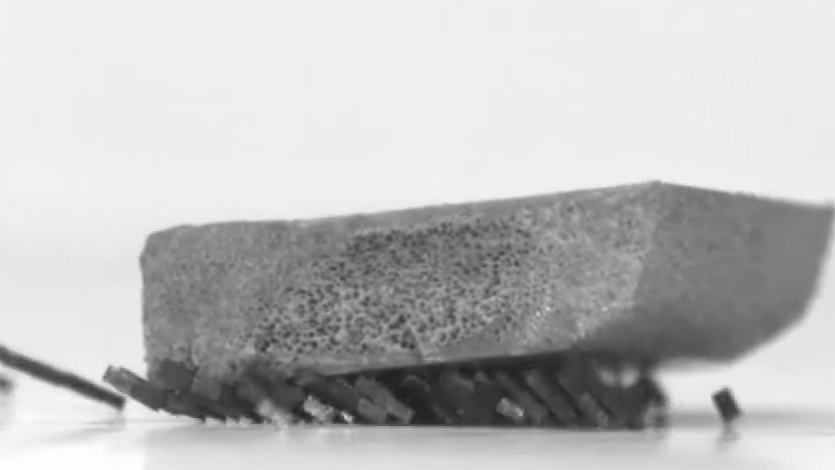
Scientists at Hanyang University in Seoul have created tiny and cute ant-like robots that work together to move objects and do other stuff just like real insects do.
Swarms of microbots carry out tasks such as transporting items and clearing pipes using magnetic fields. Inspired by ants, these robots could be applied in medicine, but they need further autonomy improvements. The robots work together and perform real feats — crossing and moving objects that are much larger than their size.
According to a study published in the journal Device, the robots operate using a rotating magnetic field and perform complex tasks that would be difficult for a single robot. Their potential applications include minimally invasive treatment of clogged arteries and precise movement of biological samples in complex conditions.
“The high adaptability of the microbot swarms to their environment and their high level of autonomy in controlling the swarm were unexpected,” says study author Jeon Jae Wi.
The swarm can climb an obstacle that is five times taller than the body length of a single microbot. A large swarm of 1000 densely packed robots formed a raft that floated on water and wrapped around a pill that was 2000 times heavier than each individual robot, enabling it to transport medication through the fluid.

On land, the swarm was able to transport a load 350 times heavier than a single robot and also clear tubes resembling blocked blood vessels. The research team developed a system allowing the swarm to control the movements of tiny organisms.
Previous research in swarm robotics focused on spherical robots that connect through “point-to-point” contact. In this study, scientists created a swarm consisting of cube-shaped microbots that have stronger magnetic attraction due to their larger surface area.
Each robot is 600 microns tall and consists of an epoxy body with bonding particles of neodymium, iron, and boron (NdFeB), allowing it to respond to magnetic fields and interact with others. Thanks to powering the robots with a magnetic field created by the rotation of two connected magnets, the swarm can self-assemble. Researchers programmed the robots to join together in various configurations, changing the angle at which they are magnetized.
“We developed a cost-effective method for mass production using mold forming and on-site magnetization, ensuring consistent geometry and magnetization profiles for stable performance. … While the study results are promising, the swarms will need better autonomy levels before they are ready for real-world application,” explains Wi.
Since swarms of magnetic microbots require external magnetic control, they lack the ability to move autonomously in complex or confined spaces, like real arteries. Future research will focus on increasing autonomy, as well as controlling their movements and trajectories in real-time feedback.
Source: SciTechDaily

Spelling error report
The following text will be sent to our editors: